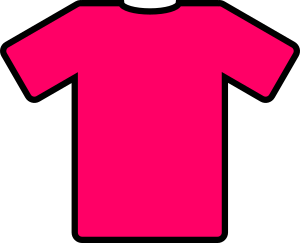The introduction of
Pink Shirt Day evoked some interesting comments and expressions from the classroom.
"Boys can't wear pink!" "Yes they can!"
I decided that everybody needed to hear each others voices in this debate.
Students had time to discuss their thoughts with a peer then an invisible continuum was constructed across the room to show that there were two extreme arguments (and everything in between).
Students decided which side that they felt more strongly aligned to and also had the choice to stand somewhere in the middle. One student chose to stand on his own, swaying slightly towards the anti-pink agenda.
Each student was allowed to say one sentence to argue why boys should or should not wear pink, in the hope that they could sway the person in the middle.
The anti-pink team started first. All 6 of them had very valid arguments as to why they felt the way that they did. As a teacher, and an informed adult, it was easy to see the influence of marketing and stereotypes had shaped these young people's minds.
The pro-pink team consisted of both girls and boys. Their comments were absolutely phenomenal.
"There is no such thing as boys and girls colours."
"Everybody should be able to choose to wear whatever they want to."
"If you can't choose what to wear, how can you ever feel free?"
These are only a few examples. Our lone fence sitter chose to go towards the pro-pink end. I also gave the option to the anti-pink debaters to change which end they were at too. They all took a few steps towards the others (all except one who was standing his ground about a totally different issue - that he should have to go
purchase a pink shirt).
Our whole class discussion then stemmed into stereotypes, and into marketing. I used Lego to get them talking. We discussed the difference between Lego Friends (pink girls Lego) and general Lego. The keen female Lego enthusiasts were horrified to think that they were supposed to
only play with Lego that was pink. As one of them valiantly replied "I play with Lego because I like to create!". We also discussed the lack of female characters in Lego including what sort of roles the existing ones had.
This discussion was completely impromptu. It came from me telling the kids that it would be cool to support Pink Shirt Day and it's anti-bullying agenda. But this for me is an example of engaged learning. The discussion was very powerful, it came from the children and provided a framework for discussing a range of societal issues. I had a student teacher observing me at the time and I wish I had taken a picture of our faces as the debate evolved. We were just blown away!
I am helping to create a classroom of thinkers that don't accept things at face value. They are willing to challenge each other and each others ideas.


